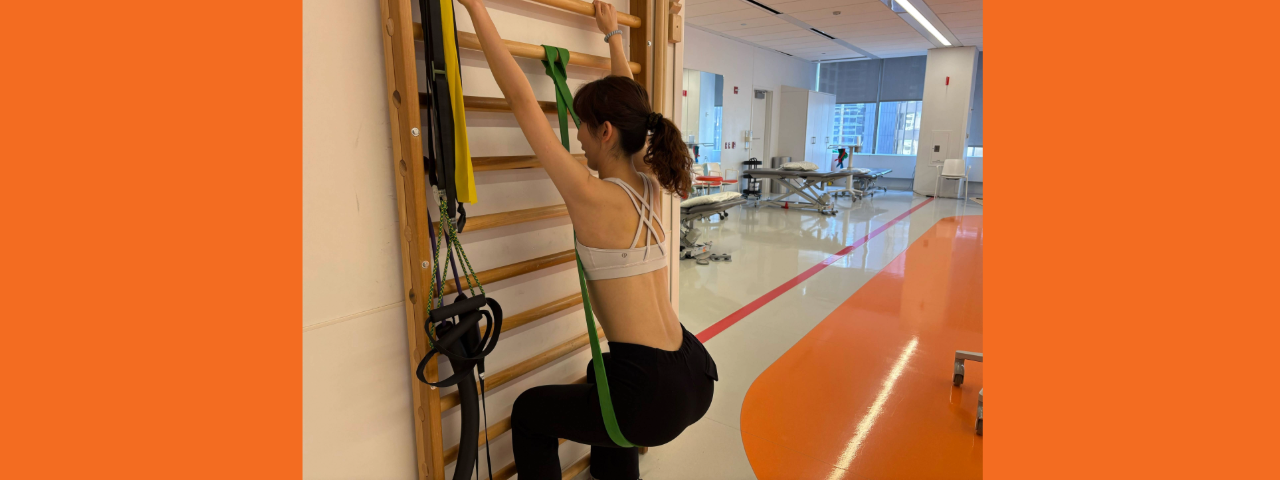Body
Each month, we invite our Shirley Ryan AbilityLab community members to submit questions via social media to our clinicians and researchers for our “Ask the Expert” series.
In conjunction with American Stroke Month in May, our latest featured expert is Richard Harvey, MD, the David W. Trott Clinical Chair of Shirley Ryan AbilityLab’s Brain Innovation Center, and the Wesley and Suzanne Dixon Stroke Chair of Stroke Rehabilitation Research. He is also a Professor of Physical Medicine and Rehabilitation, and Physical Therapy and Human Movement Sciences at Northwestern University Feinberg School of Medicine. He provides insight about stroke rehabilitation; promising stroke research and innovation; locked-in syndrome (LIS); and more.
Can you explain your role at Shirley Ryan AbilityLab?
Body
I help people with their neurology recovery following a stroke. At Shirley Ryan AbilityLab, we have a great stroke program that can help people recover their walking, self-care, communication and swallowing abilities.
What's something people incorrectly assume about your job?
Body
My clinical focus is stroke, and because of that many people think I'm a neurologist, but I'm not a neurologist. I'm a physiatrist. When I say physiatrist, some people think I mean psychiatrist, but I don't treat mental conditions. Some people think I'm a podiatrist, but I don't treat feet. As a physiatrist, think of me as a doctor focused on function.
How do you collaborate with therapists for optimal stroke rehabilitation?
Body
One of my favorite parts of my job is that I get to work with a smart and talented team of skilled therapists, including physical therapists, occupational therapists and speech therapists. These people all have skills that can help patients with stroke recover their physical and cognitive abilities.
When I work with therapists, I try to remain available to help troubleshoot problems — especially around medical tolerance for therapy. I also like to have fruitful conversations about approaches to recovery and long-term planning for rehabilitation care.
Do you have any pearls of advice for how physical therapists who work with patients with stroke can maximize their impact?
Body
One thing we value at Shirley Ryan AbilityLab is the use of high-intensity training.
If there is one thing I want all physical therapists to do to help people with stroke recover their walking ability, it’s high-intensity gait training in patients who can medically tolerate it.
We have stroke patients work at 70-80 percent of their maximum heart rate — aerobic levels of training! — using harness support for safety. We do this on a treadmill or over ground. We have found this helps our patients regain walking speed, which translates to better function all around.
What stroke research are you most excited about?
Body
The main areas of research in stroke recovery are stem cells, robotics and neuromodulation.
Stem cells are yet to be approved in the U.S. for treatment of stroke. We know they can be safe if given properly, but we do not know for sure that they help with recovery. I recommend only pursuing research studies exploring stem cells for stroke recovery that are led by U.S. medical centers.
At Shirley Ryan AbilityLab, we use robots for treatment of certain problems after a stroke. Most specifically, we use robots for facilitating recovery of walking, mostly for those who cannot walk at all. We have a number of research studies here looking at different robots for the treatment of stroke.
How effective has neuromodulation been so far? What is its future?
Body
Neuromodulation is an exciting area I have studied. It usually involves using electromagnetic stimulation of the brain, spinal cord or nerves.
At present, only implanted vagus nerve stimulation (VNS) has shown to be effective in helping people recover arm function after stroke, and we provide this therapy at Shirley Ryan AbilityLab. It requires the surgical implantation of a stimulator device. Hopefully in the future we will discover a brain, spinal cord or nerve stimulation device that does not require surgery to help people with stroke recover function.
What has been your proudest innovation in the Shirley Ryan AbilityLab stroke recovery program?
Body
Probably the one thing I am most proud of is my founding of our locked-in syndrome (LIS) program. This program has been going for 18 years now, and we have treated nearly 100 people with locked-in syndrome.
How do you work with patients with locked-in syndrome?
Body
Locked-in syndrome is a devastating stroke that occurs in the brainstem and renders individuals weak on both sides of their body, with limited mouth and tongue movement. Often patients are unable to articulate or swallow and are limited to communication with eye movements. Many feel there is nothing you can do for these people, but we have discovered just the opposite.
We have been able to get patients who qualify for and participate in our program home with their families and with a highly acceptable quality of life. We have seen some make very good neurological recovery. I have even had a few patients return to driving, which is very exciting.


